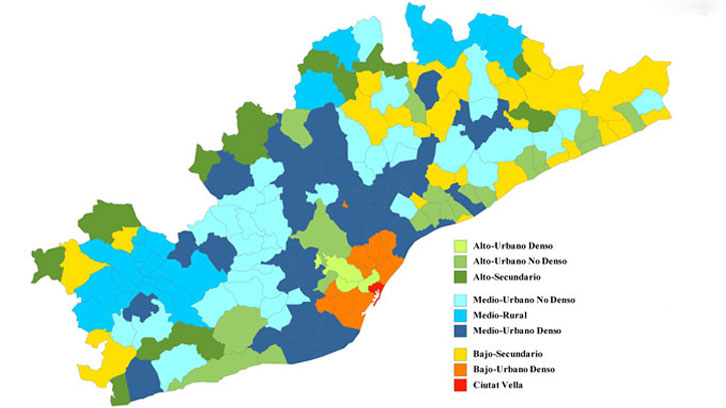Residential Mobility in the Metropolitan Region of Barcelona

This doctoral thesis describes socio-residential patterns in the Metropolitan Region of Barcelona and studies residential mobility flows in order to determine the migrant spaces within the metropolitan area. The sources are the Census of Population and Housing 2001, the Statistics on Residential Variations and the Registration and Deregistration Records of Barcelona Town Hall.
This thesis has two main aims: on the one hand, to describe socio-residential patterns of settlement in the Metropolitan Region of Barcelona (RMB) and, on the other hand, to study residential mobility flows in order to determine the migrant spaces within the metropolitan area.
|
|
|
| Figure 1: Residential mobility between socio-residential clusters in the RMB. | |
The analysis of residential mobility flows is also made at municipal level, or district level in the case of the City of Barcelona, and by socio-residential clusters. The source for this analysis is the Statistics on Residential Variations and the Registration and Deregistration Records of Barcelona Town Hall. The residential flows are studied from three different points of view: place of origin, destination, and interaction coefficient between the two places. The combination of these three perspectives allows us to establish the migrant spaces. Once bounded and identified by the above criteria, these areas are analysed according to social diversity and residential features.
Finally, the thesis includes a chapter describing motivations for residential mobility in each of the 9 socio-residential clusters, based on data from the “Survey on the Population’s Living Conditions and Lifestyles, 2006”.
Antonio J. Medina Cruz
Centre d'Estudis Demogràfics (CED)
Department of Geography
Department of Geography
References
“La movilidad residencial en la Región Metropolitana de Barcelona: delimitación y análisis de los espacios migratorios”, doctoral thesis by Antonio José Medina Cruz, supervised by Juan Antonio Módenes and Marc Ajenjo, belonging to the PhD programme in Demography and read at the Department of Geography.

